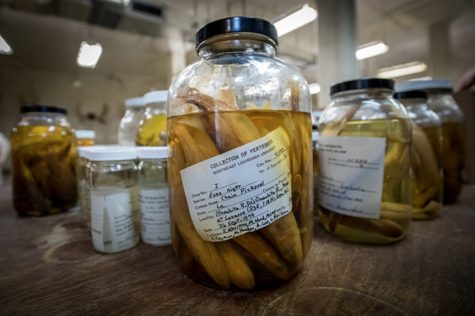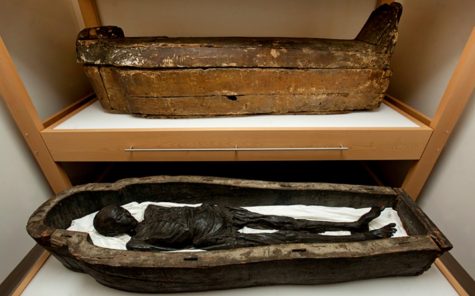Why does Tulane own 7 million dead fish?
What do 7 million dead fish, hundreds of Middle American artifacts and two Egyptian mummies have in common? They are all property of Tulane University.
For various reasons — donations, the penchants of certain professors or discoveries by those associated with the university — Tulane has acquired a variety of unusual artifacts over the years.
Perhaps the most striking is Tulane’s collection of dead fish. Housed at the Tulane University Biodiversity Research Institute, which is located near Belle Chasse along the Mississippi River, the Royal D. Suttkus Fish Collection is home to hundreds of rows of shelves, each containing thousands of jars filled with various species of dead fish.

During his 40 years at Tulane, professor Royal D. Suttkus, a professor of biology at Tulane from 1950-1990, grew the University’s massive fish collection. When he joined the Tulane faculty, he immediately began collecting dried fish specimens, building upon a small number of fish left over from a museum exhibit.
Suttkus passed away in 2009, but his legacy lives on. According to Henry Bart, Tulane professor and curator of the Royal D. Suttkus Fish Collection, Suttkus collected 5.1 million of the 7 million plus fish the facility holds today.
The collection is used by researchers around the country for the study of fish biology.
“Researchers search the collection online for specimens of interest and email us for loans, which we ship to them,” Bart said.
Tulane’s Egyptian collection is more elusive, even for interested individuals.
“It’s not very accessible,” Melinda Nelson-Hurst, a research associate in the Anthropology Department, said. “We don’t do it just for people who are curious because it’s not good to have people coming in and out of the spaces and it changes the humidity.”
The two mummies, their coffins and the associated paraphernalia were donated to Tulane medical school in 1852. For the next century and a half they were moved around to different storage locations on campus, including the basement of Howard Tilton Memorial Library, Jones Hall and even beneath the old football stadium.

Today, the mummies are located in a climate-controlled room at the Middle American Research Institute, located on the third floor of Dinwiddie Hall. Nelson-Hurst and several other Tulane professors study the mummies and occasionally show them to relevant classes.
“I’d like to be able to make the collection more accessible, and over the past couple of years we’ve been discussing how to possibly do that with the constraints we have,” Nelson Hurst said. “For example there is not a lot of space. We don’t currently have a place where they could be displayed.”
MARI does, however, have a full time exhibit of other artifacts. In the “Faces of the Maya,” students, researchers and interested community members can come and see Mayan artifacts from antiquity and modern times.
Those on display constitute only a fraction of the objects MARI has. In the 1930s there were even plans to build a Chichen Itza sized building to house them all.
“That was a legitimate model,” Erin Patterson, the Archive and Library Manager at MARI said. “And there was a big capital campaign to build it. The timing of it was very poor. I think it was right around the time the Second World War started.”
MARI has objects from all over Middle America, particularly regions occupied by the Mayan Empire. But though MARI is renowned among those who study Middle America, it is working to be more available to the wider public.
“Academics can afford to and have the time to come here and work in person with our collections and we want to encourage that,” Patterson said. “But not everyone can do that and we want to make the collections widely accessible.”
Though these artifacts — as well as the 7 million dead fish — may be unknown to portions of the Tulane student body, within their respective fields they are quite renowned.
“We are well known to fish biologists,” Bart said. “The collection attracts lots of extramural funding to Tulane and is valued for that purpose.”
Your donation will support the student journalists of Tulane University. Your contribution will allow us to purchase equipment and cover our annual website hosting costs.



Leave a Comment